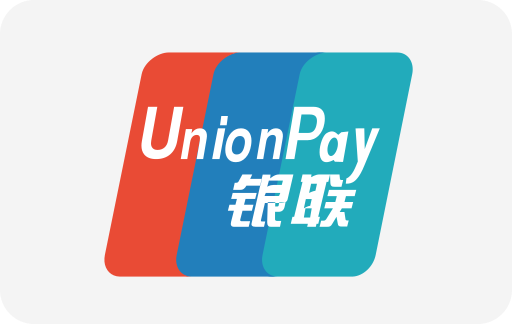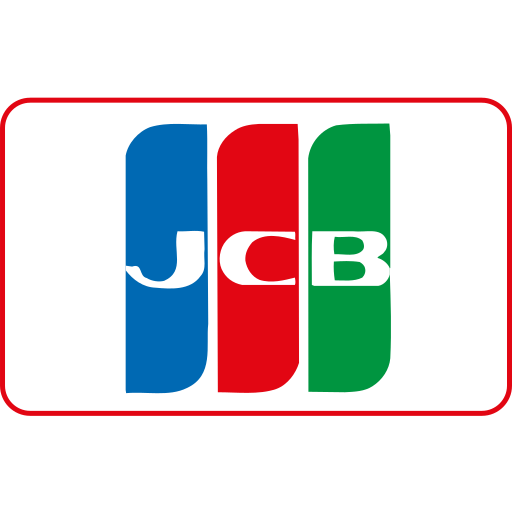
Introduction to robots.txt
In the dynamic world of online marketing and SEO, understanding the fundamental tools that supervise the interaction between your website and search engines is crucial. One such pivotal tool is the robots.txt file. Today, I’ll be unpacking what robots.txt is, why it matters, and how startups—especially those in the Philippines—can leverage it to optimize their online presence and search engine performance.
What is robots.txt?
The robots.txt file is a simple text file placed on the root directory of your website. This file instructs web crawlers or robots—like those from Google, Bing, and other search engines—about which pages or files they can or cannot crawl on your site.
At its core, it adheres to the Robots Exclusion Protocol (REP), a standard used by websites to communicate with web crawlers and control their access to certain parts of the website.
Why is robots.txt important for startups?
Startups, especially in tech incubators and emerging markets such as the Philippines, rely heavily on digital visibility. SEO is a cost-effective marketing strategy, crucial in controlling the limited marketing budgets ranging from ₱50,000 to ₱200,000 (approximately PHP pricing for startups), enabling businesses to attract organic traffic. The robots.txt file plays a vital role in:
- Preventing search engines from indexing duplicate or sensitive content
- Guiding crawlers towards your most valuable pages
- Improving crawl efficiency and search engine ranking
- Protecting private or staging pages from being exposed
How robots.txt Works: Technical Insight
The robots.txt file is accessed by web crawlers at the very beginning of their visit to your domain. The structure is straightforward. It consists of "User-agent" declarations that specify which crawlers the rules apply to and directives such as "Disallow" or "Allow" defining what can or cannot be crawled.
Here’s a simple example:
User-agent: * Disallow: /private/This instructs all crawlers (indicated by "*") not to crawl any pages or files within the /private/ directory.
Common directives in robots.txt files
- User-agent: Specifies the web crawler the rule applies to.
- Disallow: Blocks the specified directories or pages.
- Allow: Overrides a Disallow rule to permit crawling.
- Sitemap: Provides the location of your sitemap.xml file to help crawlers index pages effectively.
Case Study: Robots.txt Implementation in a Philippine Startup
Consider a SaaS startup based in Manila that launched a platform targeting SMEs. The site had multiple pages with dynamic content and staging environments. Initially, the startup faced issues with duplicated content and accidental indexing of beta features, which diluted their SEO efforts.
By properly configuring the robots.txt file to:
- Disallow the staging environment folders
- Disallow crawling of duplicated URL parameters
- Specify access only to key product and blog pages
They saw a remarkable improvement within three months. Organic traffic improved by 40%, bounce rates decreased, and search engine crawlers redirected their efforts to valuable content.
Crafting an Effective robots.txt File: Best Practices
When drafting your robots.txt, consider these principles:
- Place your robots.txt file in your root domain: For example, https://yourwebsite.com/robots.txt
- Use specific paths: Avoid using wildcard '*' too liberally as it may unintentionally block vital pages.
- Test your robots.txt: Tools like Google Search Console have a Robots Testing Tool to check if rules are correctly implemented.
- Combine robots.txt with meta tags: Use
noindextags on sensitive pages for added security.
Sample robots.txt File for a Philippine Tech Startup
User-agent: * Disallow: /admin/ Disallow: /beta/ Disallow: /temp/ Allow: /public/ Sitemap: https://yourstartupph.com/sitemap.xmlCommon pitfalls & how to avoid them
- Blocking essential assets like CSS and JS files can harm SEO and page rendering—always ensure these are allowed.
- Relying solely on robots.txt for security is insufficient—do not block private information only using robots.txt, as the file is publicly accessible.
- Overly broad disallow rules can unintentionally prevent indexing of important pages.
Table: Robots.txt Syntax and Examples
| Directive | Description | Example |
|---|---|---|
| User-agent | Specifies which crawler the rule applies to | User-agent: Googlebot |
| Disallow | Blocks specified URLs or folders from being crawled | Disallow: /secret/ |
| Allow | Allows crawling of specific pages even if parent folder is disallowed | Allow: /public/ |
| Sitemap | Gives crawler the sitemap URL for efficient indexing | Sitemap: https://example.com/sitemap.xml |
SEO Impact and Why Filipino Startups Should Care
SEO is a competitive battlefield, and startups in the Philippines can effectively level up by mastering tools like robots.txt. It’s a low-cost, high-value asset that can:
- Prevent wastage of crawl budget by search engines
- Enhance page ranking by focusing crawler attention on important content
- Improve user experience by avoiding indexing of irrelevant content
Given the country’s burgeoning tech scene, affordable SEO strategies sharpen competitive edges. Even with limited PHP budgets, implementation of robots.txt demands only knowledge and precision, not high expenditure.
Bonus Tips: Integrating robots.txt with Other SEO Strategies
- Combine with sitemap.xml: Don’t forget to link your sitemap in your robots.txt for better crawl efficiency.
- Regular Audits: As your startup grows, audit your robots.txt frequently to adapt to site changes.
- Use canonical tags: Along with robots.txt, canonical tags help to consolidate duplicate content.
- Leverage analytics data: Monitor how search bots behave via Google Search Console to refine your robots.txt directives.
Summary
Robots.txt is a deceptively simple, yet profoundly impactful tool in the SEO arsenal of any tech startup. Especially in the vibrant Philippine tech ecosystem, harnessing this file is essential for focused crawling, protecting sensitive information, and maximizing digital visibility without incurring high PHP costs. Mastering robots.txt is a step toward smarter online marketing and business growth.
Advanced Robots.txt Strategies for Scaling Startups
When your startup begins to scale, the complexity of your website architecture often increases. This means more dynamic content, multiple language versions, and maybe even micro-sites or subdomains. An advanced understanding of robots.txt can help you maintain SEO health in such scenarios.
Handling Parameters and Dynamic URLs
Many websites in the Philippines serve dynamic content or use URL parameters for filtering and sorting products. For example, an e-commerce startup may have URL formats like https://shopstart.ph/products?category=shoes&color=black. Search engines may crawl multiple permutations of these URLs, causing duplicate content issues that harm SEO.
Robots.txt directive limitations: Robots.txt cannot manage URL parameters directly; it only blocks entire directories or files. For parameter handling, Google recommends using the URL Parameters tool in Search Console or implementing canonical tags.
Blocking Parameters with Robots.txt: A Caution
While robots.txt doesn't support parameter-level blocking natively, some startups try to prevent crawling of URLs containing parameters by disallowing parameters globally. However, since most parameters exist within the query string (after ?), which robots.txt does not parse, such attempts are futile and can lead to unexpected indexing behavior.
Managing Subdomains and Multiple Sites
Startups may operate multiple subdomains like blog.startup.ph and shop.startup.ph. Remember, each subdomain requires its own robots.txt file at the root (blog.startup.ph/robots.txt), as robots.txt rules apply per host.
Example Robots.txt for Multilingual Site
User-agent: * Disallow: /private/ Disallow: /beta/ Allow: /public/ Sitemap: https://startup.ph/en/sitemap.xml Sitemap: https://startup.ph/ph/sitemap.xmlThis configuration clearly separates access and sitemaps for different language folders, aiding localized SEO strategies important in the Philippines' diverse linguistic landscape.
robots.txt and Website Security: Myths and Facts
A common misconception among startup founders is that robots.txt acts as a security firewall. In reality, it only advises compliant crawlers to avoid specific parts of your site. Malicious actors or less scrupulous bots can—and often do—ignore these instructions.
It’s critical that startups maintain proper server-side protections, such as:
- Authentication and authorization requirements for sensitive areas
- Firewall rules blocking unauthorized access
- Proper handling of sensitive data outside public web directories
Robots.txt should be viewed as a traffic manager for SEO rather than a security tool.
Real-Life Incident: Expensive Error Due to Unprotected Sensitive Data
A startup in Cebu once unintentionally disallowed Googlebot from crawling their main product pages but left their staging environment open. Search engines indexed the outdated staging content, confusing customers and leading to lost sales—an expensive lesson in robots.txt misconfiguration and the importance of securing private endpoints beyond simple crawlers’ commands.
Using PHP to Dynamically Generate Robots.txt
Startups using PHP frameworks or CMS platforms can dynamically generate their robots.txt files to reflect changing site structures. This is especially useful when content or sections are added or removed frequently.
Here’s a simple PHP snippet to serve robots.txt dynamically:
<?php header('Content-Type: text/plain'); echo "User-agent: *\n"; echo "Disallow: /admin/\n"; echo "Disallow: /temp/\n"; echo "Allow: /public/\n"; echo "Sitemap: https://yourstartup.ph/sitemap.xml\n"; ?>This approach allows startups to keep robots.txt in sync with site changes without manual updates, reducing human error and improving SEO maintenance efficiency.
Monitoring and Updating robots.txt: Tools and Techniques
Once the robots.txt file is in place, ongoing monitoring is essential. Here are key tools and techniques:
- Google Search Console Robots.txt Tester: Test your syntax and preview how Googlebot perceives your robots.txt.
- Log File Analysis: Review server logs to identify which URLs Googlebot and other crawlers request and how they respond.
- Crawl Budget Optimization: Analyze crawl stats in Google Search Console to ensure crawlers efficiently use their allocated crawl budget, which is important for startups with content growth ambitions.
Common Errors to Watch For
- 404 error for robots.txt – crawlers will assume no restrictions and crawl everything.
- Syntax errors like missing colons or incorrect casing.
- Accidentally blocking CSS or JS assets required to render the page.
Global Search Engine Practices and robots.txt Compliance
While Google, Bing, Yahoo!, and others respect robots.txt directives, some lesser-known or malicious bots do not. For startups targeting the Philippines and global customers, it’s important to note that compliance varies.
If your startup receives fraudulent or spammy bot traffic, relying on robots.txt alone won’t prevent it. Using server-side security rules, rate limiting, and bot management solutions is necessary.
robots.txt in the Context of Mobile-First Indexing
Google’s mobile-first indexing emphasizes how mobile versions of your site are crawled and indexed first. Disallowing critical resources like CSS or JavaScript in your robots.txt file can hinder Google’s ability to render and assess your mobile pages properly, resulting in lower rankings.
Philippine mobile users often access content via mobile devices, underscoring the importance of robots.txt files correctly permitting mobile crawler access for optimal search performance.
Table: robots.txt vs Meta Robots Tag - When to Use Each
| Aspect | robots.txt | Meta Robots Tag |
|---|---|---|
| Main Function | Blocks or allows crawling of URLs | Directs indexing behavior of crawled pages |
| Visibility | Publicly accessible file; instructions to all crawlers | Embedded in HTML; only affects pages containing the tag |
| Use Case | Prevent crawler access to sensitive folders, staging areas | Control whether a page appears in search results (index/noindex) |
| Effect on SEO | Stops crawling but not necessarily indexing; may lead to unindexed content if blocked | Explicitly instructs search engines to index or not index a page |
| Example | Disallow: /private/ | <meta name="robots" content="noindex"> |
How Philippine Startups Benefit from robots.txt as Part of a Holistic SEO Approach
Incorporating robots.txt properly can save startups thousands of PHP in paid advertising by maximizing organic visibility. When startups focus on creating quality content, optimize for mobile, and manage crawl behavior efficiently, they set a foundation for sustainable growth.
With a practical knowledge of robots.txt, Filipino entrepreneurs can also navigate regional challenges such as localized search preferences, varying internet speeds, and the dynamism of platforms popular in the Philippines like Facebook and Google Search.
Next Steps: Practical Implementation Checklist
- Create and place a basic robots.txt file in the root directory.
- Review existing site structure and identify directories or files to disallow.
- Test the file using Google Search Console’s Robots.txt Tester.
- Submit sitemaps and monitor crawl stats regularly.
- Use canonical tags and meta robots tags where robots.txt isn’t enough.
- Audit robots.txt quarterly or after major site updates.
- Keep updated with SEO trends and Google guidelines, especially for growing Philippine startups competing with international players.
Mastering the nuances of robots.txt will empower your tech startup to take control of your search engine visibility, optimize crawler interaction, and build a strong digital foundation without incurring high development costs. This is particularly beneficial in emerging tech hubs like the Philippines, where every peso counts and strategic digital marketing can accelerate growth exponentially.
We are the best marketing agency in the Philippines.
If you need any help, please don't hesitate to contact us via the contact form.















Ang PH Ranking ay nag-aalok ng pinakamataas na kalidad ng mga serbisyo sa website traffic sa Pilipinas. Nagbibigay kami ng iba’t ibang uri ng serbisyo sa trapiko para sa aming mga kliyente, kabilang ang website traffic, desktop traffic, mobile traffic, Google traffic, search traffic, eCommerce traffic, YouTube traffic, at TikTok traffic. Ang aming website ay may 100% kasiyahan ng customer, kaya maaari kang bumili ng malaking dami ng SEO traffic online nang may kumpiyansa. Sa halagang 720 PHP bawat buwan, maaari mong agad pataasin ang trapiko sa website, pagandahin ang SEO performance, at pataasin ang iyong mga benta!
Nahihirapan bang pumili ng traffic package? Makipag-ugnayan sa amin, at tutulungan ka ng aming staff.
Libreng Konsultasyon